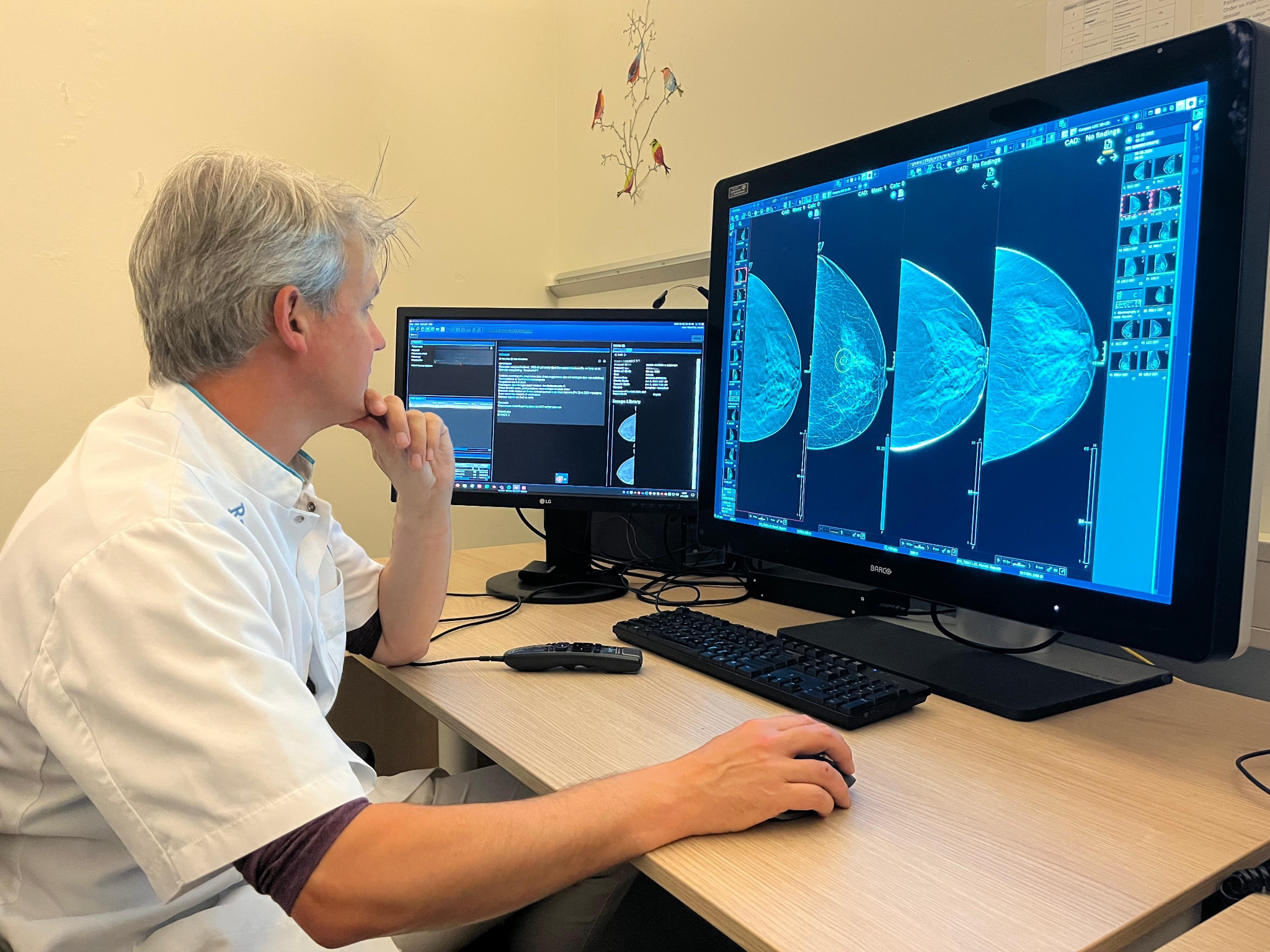AI as effective as radiologists in detecting breast cancer
Lauren Comiteau
A study led by Dutch researchers from Radboud University Medical Center and published in The Lancet Digital Health has found that AI does as good a job – or better – than radiologists when it comes to detecting breast cancer in mammography screenings.
“This is a major outcome, if not really surprising,” study leader and breast radiologist Ritse Mann told Dutch News. “AI sometimes finds things two to four years earlier. These are real cancers that grow and do real harm. They were left in the breast and grew. People became lymph node positive. We want to prevent that. It’s best to find tumours earlier when they can be less harmful with treatment.”
Current practice in the Netherlands requires two radiologists to read a mammogram, but researchers have found that replacing the second one with AI leads to more accurate results, with computers detecting tumours earlier and more frequently than humans.
Sweden is already doing this, said Mann in a press release. “Only if the AI has any doubts is a second radiologist consulted. We’re seeing that the radiologist works very well with the AI, which means more tumours are detected without many more women having to return for additional checkups.”
The numbers
Radboud University Medical Center analysed 42,000 breast scans in the Utrecht region that were performed as part of the Dutch breast cancer screening program. They followed the women who provided the scans for some four and a half years.
The results? That a single radiologist combined with AI detect more tumours, and sooner, than two radiologists. “Sometimes AI sees a tumour, but the radiologists don’t recognise it as such,” said Suzanne van Winkel, one of the study’s authors, in a press release. “We then call it a false positive. But often, the tumour still surfaces on a subsequent scan. So, the AI was right after all”.
Researchers say that using AI can also reduce the workload of radiologists and save millions of euros annually. But because screening is done here on the national level, as compared to Sweden’s regional screenings, implementing it is more logistically challenging. “It needs to be available for all people at the same time,” said Mann.
He says more IT capacity and funding is also needed. “The Netherlands is still about two years away from replacing the second radiologist with AI if we work hard, while in reality, it will likely take 4-5 years to make the transition. By that time, everything could be done by autonomous AI, where AI does it all unless there’s an abnormality.”
But Mann isn’t worried about his day job. “It won’t make radiologists obsolete, but it will change the profession,” he said.
AI could, for example, free up doctors to have more time to talk with their patients and make diagnoses as compared to reading mammograms that computers can learn to do.
“I also don’t see robots placing needles in patients.”
Thank you for donating to DutchNews.nl.
We could not provide the Dutch News service, and keep it free of charge, without the generous support of our readers. Your donations allow us to report on issues you tell us matter, and provide you with a summary of the most important Dutch news each day.
Make a donation